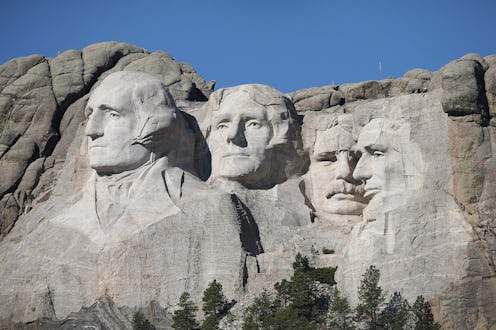News
5 Landmarks That Need A Name Change
On Monday, President Obama is traveling to Alaska to make a grand announcement: Mt. McKinley, America's tallest mountain, will be renamed Denali. For Alaskans, this is old news. The majestic mountain, with a peak over 20,000 feet high, has been known inside Alaska as Denali for hundreds of years. Despite the federal government formally recognizing the soaring peak as Mt. McKinley in 1917, Alaska natives continued to stand by the name Denali, or "the great one."
"This name change recognizes the sacred status of Denali to many Alaska Natives,” Secretary of Interior Sally Jewell said Sunday in a statement. "The mountain has been known as Denali for generations. With our own sense of reverence for this place, we are officially renaming the mountain Denali in recognition of the traditions of Alaska Natives and the strong support of the people of Alaska."
The name change was a long time coming. The Alaska state government formally recognized the name Denali in 1975, and a national park and preserve created around the mountain was given the name Denali by the National Parks Service in 1980. In some ways, it's amazing that it has taken the federal government this long to acknowledge the mountain's native name.
But Mt. McKinley isn't the only natural landmark in the United States that has been whitewashed by the federal government. Here's five other landmarks that could go back to their original names...
Lake Superior
If you've read Henry Wadsworth Longfellow's "The Song of Hiawatha," you know Lake Superior is really "Gitche Gumee." Well, in actuality, the Native American tribe Ojibwe's correct spelling is "Gichi-Gami." The largest of North America's Great Lakes, however, was renamed Lake Superior by Caucasian settlers. There's not much of a difference between Lake Superior and "Gitche Gumee," which means "a great sea," so why not honor the area's original settlers?
Mount Rainier
Washington's Mt. Rainier was originally known as "Tacoma" and "Tahoma." Like most landmarks in the United States, it was renamed after an European explorer "discovered it," and named after yet another European man. Considering there's already a Tacoma, Washington, nearby, giving the mountain its original moniker wouldn't be that tough.
Mount Baldy
Angelenos know the tallest peak in the San Gabriel Mountains as "Mt. Baldy," but few locals know its true name: Mt. San Antonio. A nickname given by white American settlers, Mt. Baldy has become so colloquial that it may as well be the official name — but let's not forget Mt. San Antonio.
Mount Rushmore
The Sioux name for South Dakota's Mt. Rushmore was "The Six Grandfathers," which actually sounds way cooler. Of course, we'll need to add the faces of two former U.S. presidents — America's "grandfathers" — for the name to make sense now.
Mount Whitney
The tallest mountain in the Sierra Nevada mountain range is known as Mt. Whitney, named after noted Californian geologist Josiah Whitney. But the peak's native name was "Tumanguya" by the Native American tribe who inhabited the Sierra Nevadas long before white settlers descended upon the desert region.
Image: Sharon Mollerus/Flickr
